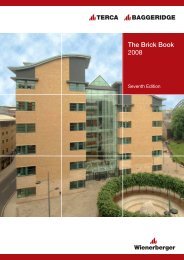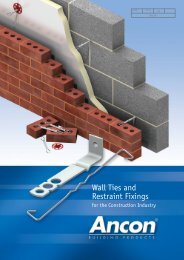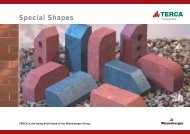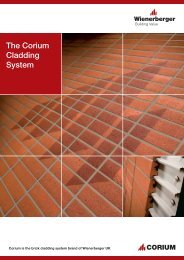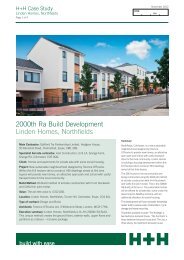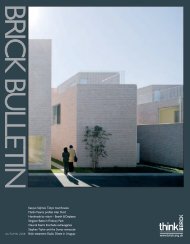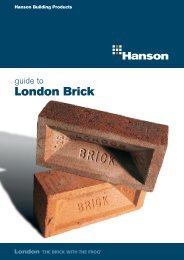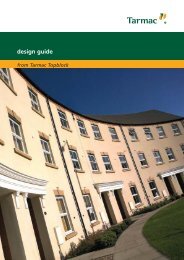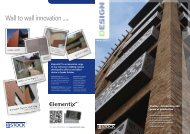The Celcon Thin-Joint System A Definitive Guide - Masonry First
The Celcon Thin-Joint System A Definitive Guide - Masonry First
The Celcon Thin-Joint System A Definitive Guide - Masonry First
You also want an ePaper? Increase the reach of your titles
YUMPU automatically turns print PDFs into web optimized ePapers that Google loves.
4 Design <strong>Guide</strong>lines<br />
14<br />
Wall junctions<br />
Walls should normally be bonded in at returns and<br />
junctions unless a movement joint is required.<br />
Where a section of wall has to be constructed after other work,<br />
bonding can be replaced by a straight joint, providing proprietary flat<br />
strip shear ties are built in across the joint (as shown) or helical ties driven in during<br />
construction. This method of jointing is preferable to bonding under circumstances where<br />
differential movement is likely to occur (e.g. where sections of wall are built off different<br />
foundations). Where an inner leaf is built prior to the outer leaf, helical ties can be<br />
driven through the inner leaf into the internal partition (penetration into the partition<br />
should be a minimum of 50mm). <strong>The</strong>se ties can be positioned irrespective of coursing.<br />
Where enhanced sound insulation is required, an acoustic sealant can be applied to each<br />
side of the vertical straight joint.<br />
3M 3<br />
Movement joints<br />
As for all masonry walls, the accommodation of movement should be<br />
considered at the design stage. <strong>The</strong> following general recommendations<br />
apply to aircrete:<br />
- Walls in excess of 6m long should be designed as a series<br />
of panels separated by movement joints at not more than<br />
6m centres<br />
- <strong>The</strong> position of the first joint from the corner should be<br />
designed to be within 3m of a corner or fixed end<br />
- An alternative to movement joints is the use of bed-joint<br />
reinforcement, where entire wall panels are reinforced.<br />
This alternative is recommended particularly for an<br />
externally rendered solid wall construction or an outer<br />
leaf of rendered blockwork. This also applies to separating<br />
walls which should not contain movement joints<br />
6M



